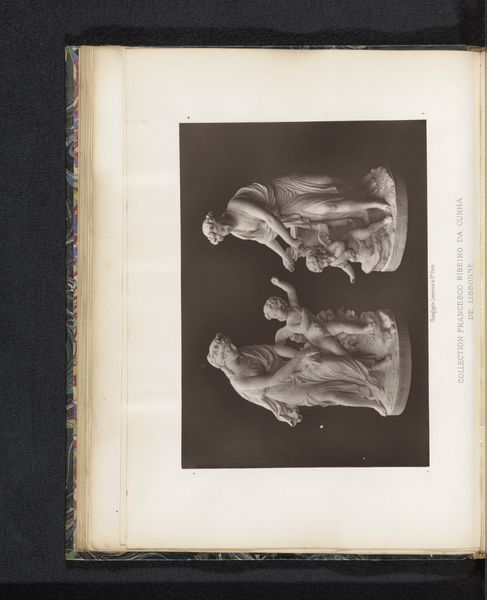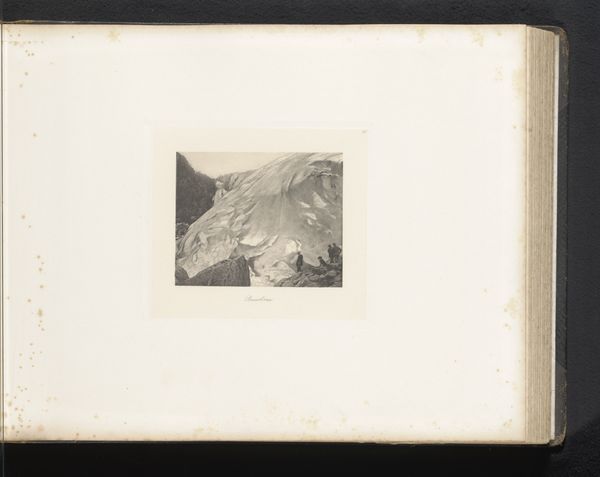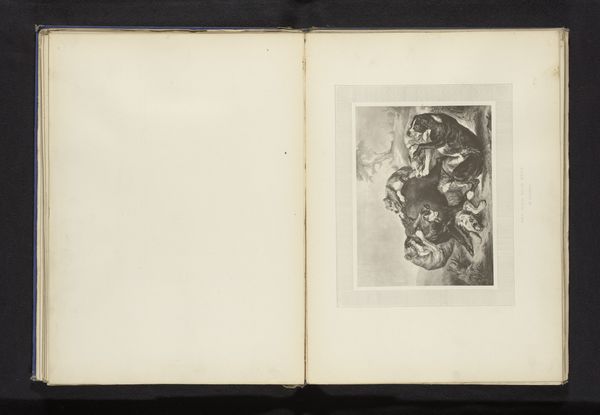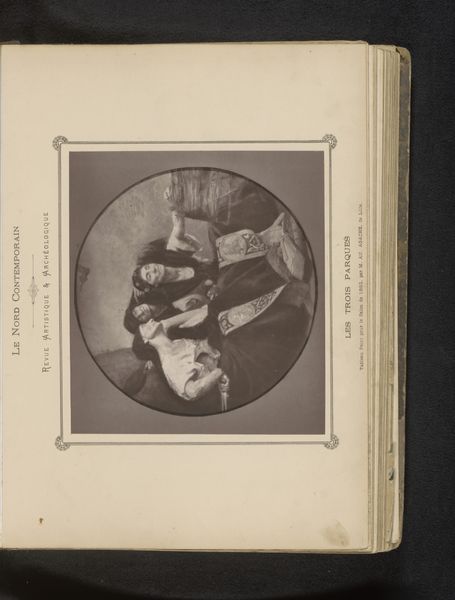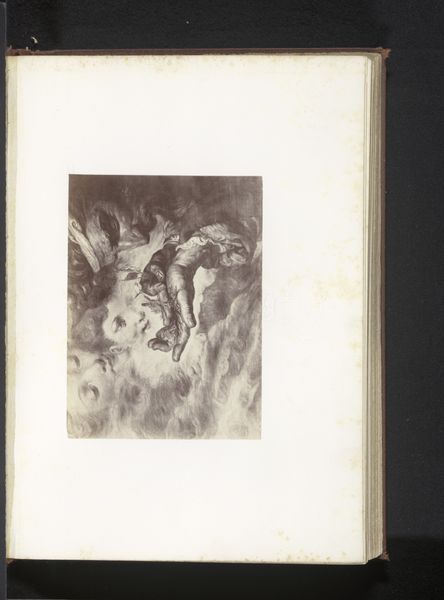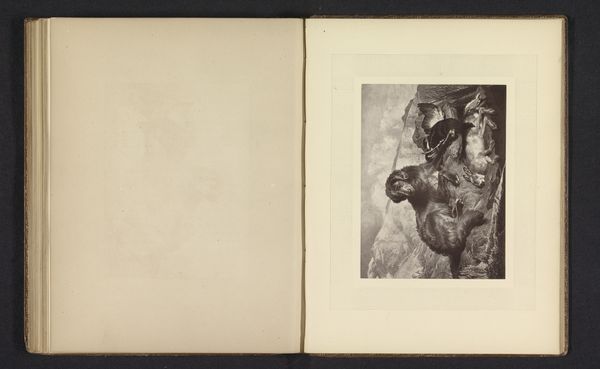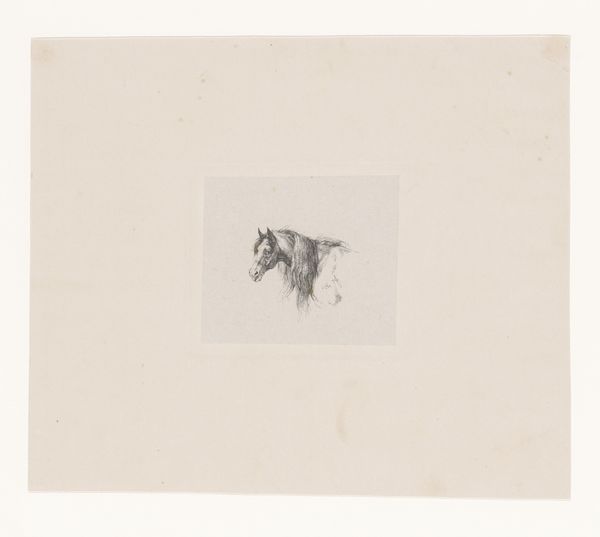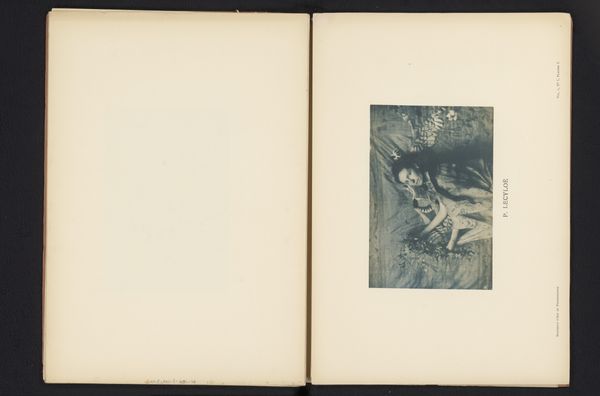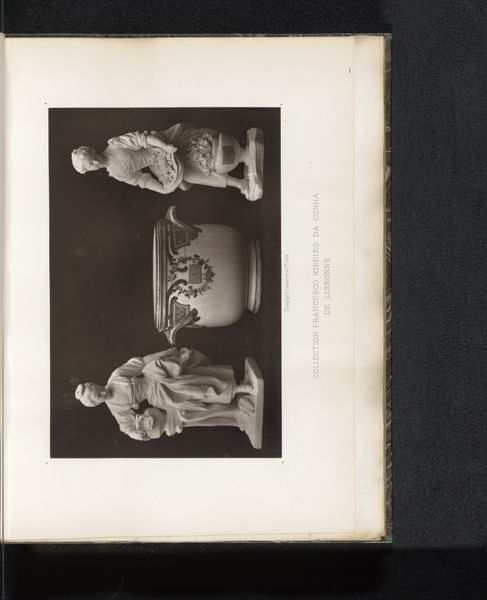
Twee sculpturen van een vrouw die thee drinkt en een violiste before 1884
0:00
0:00
lemerciercie
Rijksmuseum
mixed-media, print, metal, photography, sculpture
#
portrait
#
mixed-media
# print
#
metal
#
stone
#
sculpture
#
figuration
#
photography
#
sculpture
#
academic-art
Dimensions: height 125 mm, width 185 mm
Copyright: Rijks Museum: Open Domain
Editor: Here we have a photographic print from before 1884 titled "Twee sculpturen van een vrouw die thee drinkt en een violiste," credited to Lemercier & Cie. It captures two sculptural figures. There's something very classical about the draped fabric and the poses. How do you see this image functioning, thinking about its materiality? Curator: I see it as deeply entrenched in the burgeoning culture of photographic reproduction, particularly regarding sculpture. Let’s think about the context: Photography provided a way to disseminate sculptural works far beyond their physical location. Consider who controlled this dissemination – the photographic firms like Lemercier. Editor: So, instead of focusing solely on the sculptures themselves, we should be thinking about Lemercier's role as a producer of this image. How does their work change the viewer's understanding of the sculptures? Curator: Exactly! These photographs turned three-dimensional objects into commodities, circulated as images, and consumed within a growing market for art reproductions. What was previously a unique sculptural object becomes part of a mass-produced visual culture. The paper, the printing process, the distribution networks—all are essential to understanding its impact. Consider the labour involved at each stage. Editor: That shifts my perspective quite a bit. I was initially drawn to the artistry of the sculptures, but now I am more aware of the material processes involved in its production. It raises questions about access and the democratization of art. Curator: Indeed. The photograph makes the sculptures available in a new, portable form, but it also mediates our experience of them, transforming artistic creation into a commodity. Think about who could afford these photographic prints. It really wasn't *that* democratized. Editor: It’s fascinating to consider the layers of production and consumption intertwined in what appears to be a simple photographic reproduction. It gives me a fresh appreciation for how the meaning of an artwork is shaped by its materiality and mode of distribution.
Comments
No comments
Be the first to comment and join the conversation on the ultimate creative platform.
